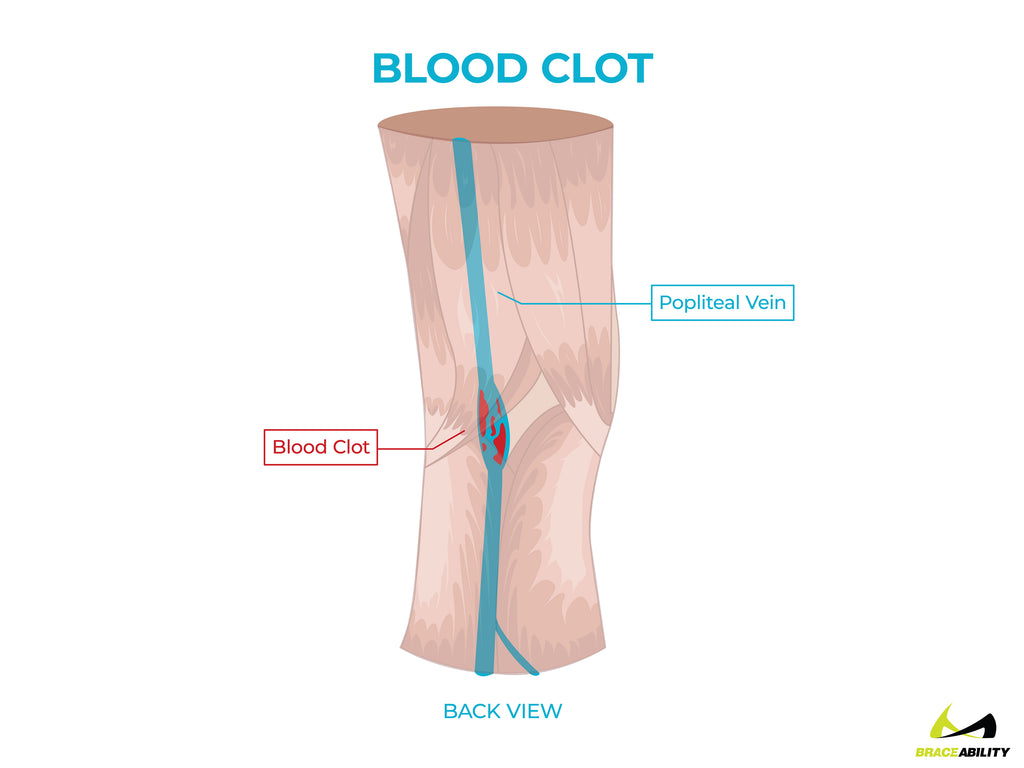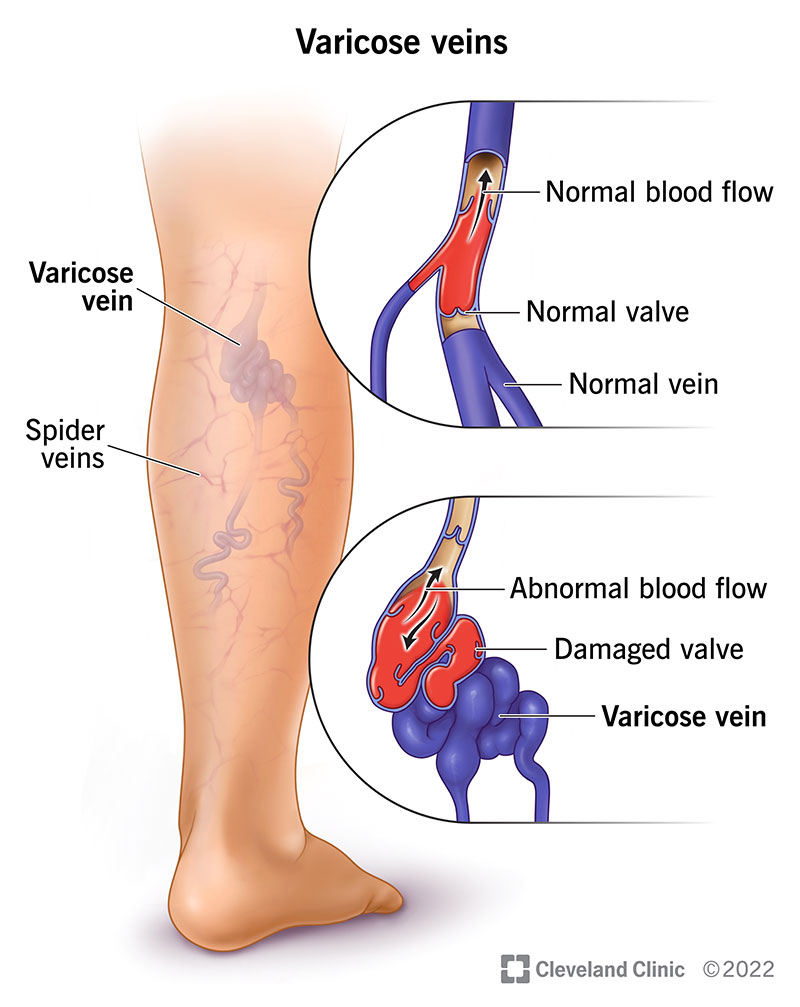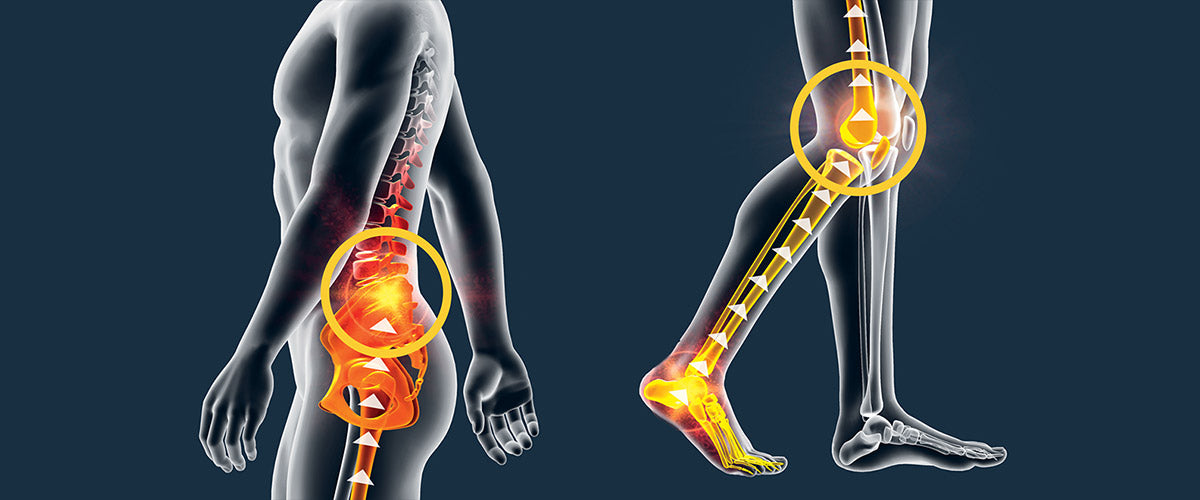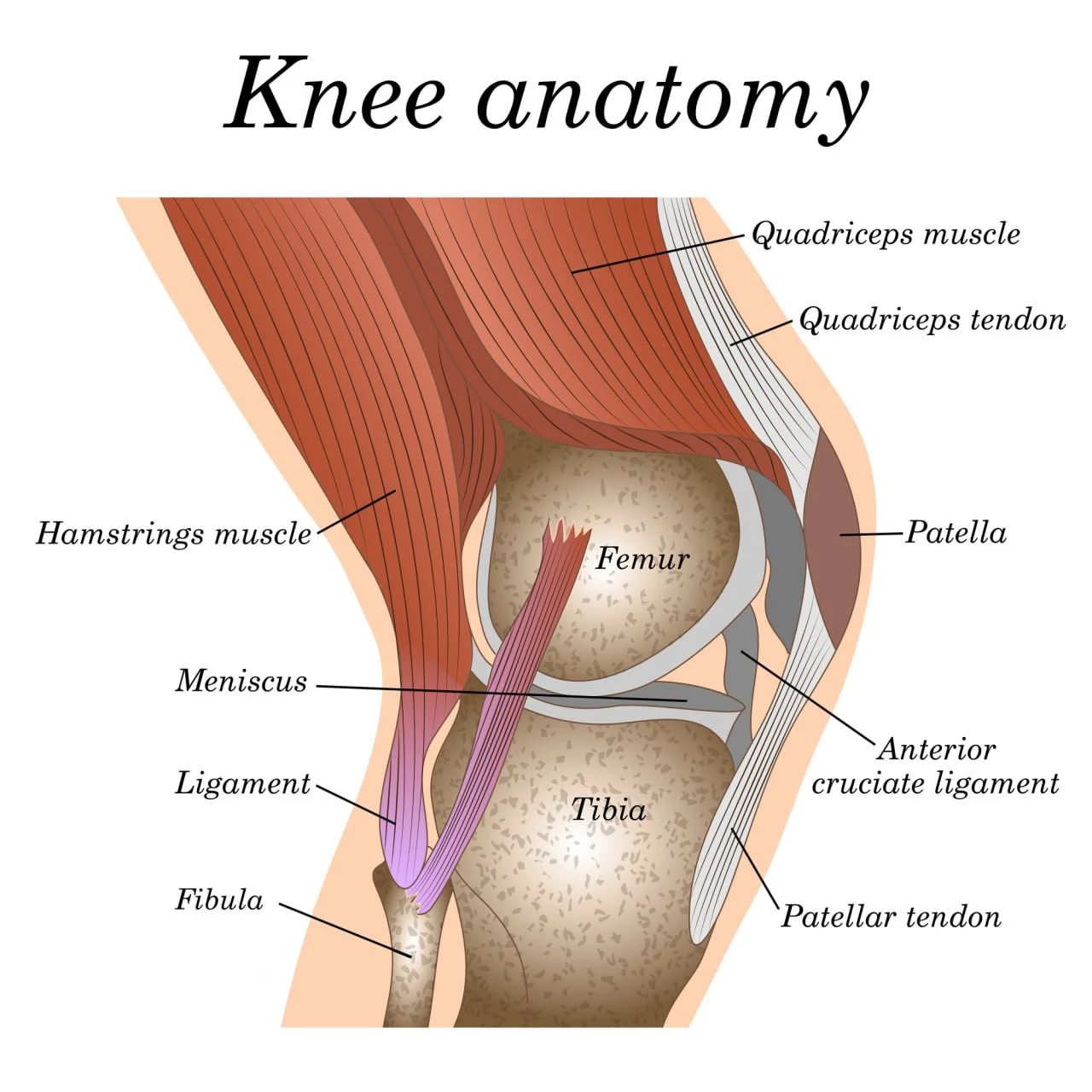Veins behind the knee can ache due to conditions like varicose veins or deep vein thrombosis. Consult a physician to receive an accurate diagnosis.
Veins behind the knee, also known as the popliteal veins, are crucial for blood circulation. Pain in this area can indicate underlying issues such as varicose veins or deep vein thrombosis (DVT). Varicose veins are swollen, twisted veins that can cause discomfort and aching.
DVT is a more serious condition where a blood clot forms in a deep vein, potentially leading to severe complications. Early detection and treatment are essential to prevent further health issues. Regular exercise, maintaining a healthy weight, and avoiding prolonged inactivity can help manage and prevent vein-related problems. If you want a precise diagnosis and course of treatment, always see a healthcare provider.
Veins Behind Knee Ache: Quick Relief Tips & Causes
Ache behind the knee can be troubling. It affects daily activities. Knowing the causes helps. Quick relief tips can ease the pain. Understanding the problem is essential.
Causes Of Veins Behind Knee Ache
Several factors can lead to pain behind the knee. Here are some common causes:
- Varicose Veins: Enlarged veins can cause discomfort.
- Deep Vein Thrombosis (DVT): Blood clots in veins can be painful.
- Baker’s Cyst: Fluid-filled cysts behind the knee.
- Injury: Trauma can lead to pain.
Quick Relief Tips For Knee Vein Ache
Immediate relief can help manage the pain. Follow these tips:
- Rest: Avoid activities that strain the knee.
- Ice: Apply ice packs for 20 minutes. Repeat several times a day.
- Compression: Use a compression bandage. It reduces swelling.
- Elevation: Keep the leg elevated. This helps reduce pain.
- Pain Relievers: Take over-the-counter pain relief medications.
When To See A Doctor
Consult a doctor if you experience:
- Severe pain and swelling
- Redness or warmth around the knee
- Difficulty moving the leg
- Persistent pain despite home treatment

Credit: universityhealthnews.com
Symptoms Of Vein Aches In The Knee
Vein aches in the knee can be very uncomfortable. Understanding the symptoms helps in recognizing the problem early. Below are some common symptoms to watch out for.
Identifying Pain Points
The pain behind the knee can be sharp or dull. It often intensifies after standing for long periods. Sometimes, the pain may radiate to the lower leg. You might also feel a throbbing sensation in the affected area.
Swelling And Discoloration
Swelling is a common sign of vein issues behind the knee. The skin around the knee may appear red or blue. In severe cases, the veins may become visible and look twisted. The affected area often feels warm to the touch.
Range Of Motion Limitations
Vein aches can limit your knee’s range of motion. Bending or straightening the knee might be painful. You may also experience stiffness, making it hard to move the knee freely. This can affect your ability to walk or perform daily activities.
| Symptom | Description |
|---|---|
| Pain Points | Sharp or dull pain behind the knee |
| Swelling and Discoloration | Red or blue skin, visible veins |
| Range of Motion Limitations | Difficulty bending or straightening the knee |
- Pain Points: Sharp, dull, or throbbing pain.
- Swelling and Discoloration: Red, blue skin, and visible veins.
- Range of Motion Limitations: Stiffness and limited knee movement.
Common Causes Of Vein Pain Behind The Knee
Vein pain behind the knee can be troubling. It can affect your daily activities. Looking for the proper treatment might be aided by understanding the causes. Below are some common causes of vein pain behind the knee.
Varicose Veins And Related Issues
Varicose veins are swollen, twisted veins. They usually appear on the legs. These veins can cause aching and discomfort behind the knee. Symptoms include:
- Visible, bulging veins
- Heavy feeling in the legs
- Itching around the veins
Smaller red, purple, and blue blood vessels make up spider veins. They are visible through the skin. While they are less severe, they can still cause discomfort.
Deep Vein Thrombosis (dvt)
Deep Vein Thrombosis (DVT) is a serious condition. It involves a blood clot in a deep vein, often in the leg. Symptoms of DVT include:
- Swelling in one leg
- Severe pain behind the knee
- Warmth in the affected area
Risk factors for DVT include prolonged sitting, surgery, and certain medical conditions. DVT requires immediate medical care.
Baker’s Cyst And Vascular Concerns
A Baker’s cyst is a fluid-filled sac behind the knee. It often results from arthritis or a knee injury. Symptoms of a Baker’s cyst include:
- Swelling behind the knee
- Stiffness and difficulty bending the knee
- Pain that worsens with activity
Sometimes, a Baker’s cyst can rupture. This can lead to severe pain and swelling. Vascular issues can arise from this condition.

Credit: www.braceability.com
Quick Relief Tips For Knee Vein Pain
Experiencing pain in the veins behind your knee can be distressing. Immediate relief is crucial for comfort and mobility. Here are some quick relief tips for knee vein pain to help you ease the discomfort.
Elevation And Rest
Resting your leg can significantly reduce knee vein pain. Elevate your leg with a pillow to improve blood flow. This simple action can minimize swelling and discomfort. Aim to keep your leg elevated above heart level for optimal results.
Cold Compresses
Applying a cold compress can reduce inflammation and numb pain. Use a cloth-wrapped bag of frozen peas or a cold pack. Apply it to the back of your knee for 15-20 minutes. Repeat every few hours as needed. This method can provide quick, temporary relief.
Compression Therapy
Compression therapy entails the use of customized wraps or stockings. These garments help improve circulation and reduce swelling. Choose a compression level that’s comfortable but effective. Wearing compression gear can offer support and alleviate pain during daily activities.
| Tip | Action | Duration |
|---|---|---|
| Elevation and Rest | Elevate leg with pillow | As needed, above heart level |
| Cold Compresses | Apply cold pack | 15-20 minutes, every few hours |
| Compression Therapy | Wear compression stockings | Throughout the day |
Exercises For Alleviating Vein Pain
Do you feel pain behind your knee? This is often due to vein issues. Regular exercise helps reduce this pain. Here are some exercises to help you feel better.
Gentle Stretching Routines
Gentle stretches can ease vein pain. They lessen stiffness and enhance blood flow.
- Calf Stretch: Stand facing a wall. Place one foot behind you. Keep your heel on the ground. For 20 seconds, bend forward and hold it.
- Hamstring Stretch: Sit on the floor. Extend one leg forward. Reach for your toes and hold for 15 seconds.
- Quadriceps Stretch: Stand on one leg. Pull your other leg up behind you. Keep your knees together and hold your ankle. Hold for 15 seconds.
Low-impact Cardiovascular Activities
Low-impact cardio exercises boost circulation. They are gentle on your veins.
- Walking: Walk at a steady pace for 30 minutes daily.
- Swimming: Swim laps for 20 minutes. The water supports your body, reducing strain.
- Cycling: Ride a stationary bike for 20 minutes. To make the resistance comfortable, adjust it.
Strengthening Exercises For Stability
Strengthening exercises help support your veins. They build stability in your legs.
- Leg Lifts: Lie on your back. Raise one leg at a time. Hold for 10 seconds and switch.
- Heel Raises: Stand with your feet shoulder-width apart. Take a step forward and balance on your toes. Drop back down and do it fifteen more times.
- Side Leg Raises: Lie on your side. Lift your top leg to hip height. Lower it back down. Do 10 lifts on each side.
| Exercise | Duration | Frequency |
|---|---|---|
| Calf Stretch | 20 seconds | 3 times daily |
| Walking | 30 minutes | Daily |
| Leg Lifts | 10 seconds per leg | 3 sets daily |

Credit: my.clevelandclinic.org
When To Seek Medical Attention
Experiencing pain behind the knee can be alarming. It’s critical to understand when to seek medical assistance. Understanding the signs of severe vein disorders and potential complications can help you make informed decisions.
Signs Of Severe Vein Disorders
Some symptoms indicate severe vein disorders. These signs need immediate attention:
- Swelling behind the knee
- Redness or discoloration
- Warmth to the touch
- Pain that worsens with movement
Complications Requiring Immediate Care
Severe complications can arise. Seek immediate care if you experience:
- Sudden, intense pain behind the knee
- Shortness of breath
- Chest pain
- Unexplained swelling of the leg
These symptoms may indicate blood clots or other serious conditions.
Consulting A Vascular Specialist
A vascular specialist can provide expert care. They help manage vein issues effectively. Consider consulting a specialist if:
- You have persistent pain behind the knee
- Home remedies do not relieve symptoms
- There’s a family history of vein disorders
Early intervention can prevent complications. Regular check-ups can ensure healthy veins.
Preventative Measures To Avoid Knee Vein Pain
Knee vein pain can disrupt daily life. Adopting preventive measures can help. Here are some effective strategies to reduce knee vein pain.
Maintaining Healthy Body Weight
Keeping a healthy body weight is crucial for vein health. Excess weight puts pressure on veins. This pressure can cause pain behind the knee. Use a balanced diet and regular exercise to maintain an ideal weight.
| Food Type | Examples |
|---|---|
| Fruits | Apples, Berries, Oranges |
| Vegetables | Spinach, Broccoli, Carrots |
| Protein | Chicken, Fish, Beans |
| Whole Grains | Oats, Brown Rice, Quinoa |
Regular Physical Activity
Regular physical activity improves circulation. Better circulation reduces knee vein pain. Choose low-impact exercises like walking or swimming. These activities strengthen muscles around the knee.
- Walking
- Swimming
- Cycling
- Yoga
Proper Nutrition For Vascular Health
Good nutrition supports healthy veins. Include foods rich in vitamins and minerals. These nutrients improve blood flow and vein strength.
- Vitamin C: Found in citrus fruits and bell peppers.
- Vitamin E: Found in nuts and seeds.
- Omega-3 Fatty Acids: Derived from flaxseeds and fish.
Drink plenty of water daily. Hydration keeps veins flexible and healthy. Avoid high-sodium foods. Too much salt can cause fluid retention and vein swelling.
Understanding Compression Garments
Compression garments are special clothing designed to improve blood flow. They are often used to relieve pain and swelling in the veins behind the knee.
Types Of Compression Wear
There are different types of compression wear available. Each serves a unique purpose.
- Compression Socks: These are worn on the feet and calves. They enhance blood flow and lessen edema.
- Compression Sleeves: These cover the legs or arms. They are ideal for targeted compression.
- Compression Tights: These cover the entire lower body. They provide even compression from waist to toes.
How To Use Compression Correctly
Wearing compression garments correctly is crucial for their effectiveness.
- Choose the right size. Measure your legs to find the best fit.
- Put them on in the morning. This is when your legs are least swollen.
- Ensure they are smooth. Avoid wrinkles or folds in the fabric.
Benefits And Precautions
Compression garments offer many benefits. They can significantly improve your comfort and health.
| Benefits | Precautions |
|---|---|
|
|

Alternative Remedies And Supplements
Many people experience veins behind knee ache and seek alternative remedies. Understanding these options can help manage discomfort effectively.
Herbal Treatments
Herbal treatments offer natural relief for veins behind knee ache. Certain herbs improve blood flow and reduce inflammation.
- Horse Chestnut: Reduces swelling and improves vein health.
- Butcher’s Broom: Eases blood vessel constriction and boosts circulation.
- Ginkgo Biloba: Enhances blood flow and decreases vein pain.
Vitamins For Circulatory Health
Vitamins play a crucial role in maintaining circulatory health. They strengthen veins and support overall leg wellness.
- Vitamin C: Promotes collagen production for vein strength.
- Vitamin E: Acts as an antioxidant and improves blood flow.
- Vitamin K: Helps blood clotting and prevents bleeding.
Hydration And Its Impact
Proper hydration is essential for vein health. Water helps maintain blood volume and prevents vein swelling.
| Hydration Tips | Benefits |
|---|---|
| Drink at least 8 glasses of water daily | Keeps blood thin and flowing smoothly |
| Limit caffeine and alcohol intake | Prevents dehydration and vein constriction |
| Incorporate hydrating foods like cucumbers and oranges | Supports overall hydration and vein health |
Frequently Asked Questions
What Are The Signs Of A Blood Clot Behind The Knee?
Signs of a blood clot behind the knee include swelling, pain, warmth, redness, and tenderness in the affected area. Seek medical advice promptly.
Why Do The Veins Behind My Knee Hurt?
Veins behind your knee may hurt due to varicose veins, blood clots, or muscle strain. Consult a doctor for diagnosis.
Why Do The Veins In The Back Of My Legs Hurt?
Veins in the back of your legs may hurt due to varicose veins, poor circulation, or deep vein thrombosis. To ensure appropriate diagnosis and treatment, consult a physician. Regular exercise, elevating your legs, and wearing compression stockings can help alleviate discomfort.
What Does It Mean When The Back Of Your Leg Hurts Behind The Knee?
Pain behind the knee can indicate conditions like hamstring injury, Baker’s cyst, or deep vein thrombosis. Consult a doctor.
Conclusion
Understanding the causes of knee vein ache is crucial for effective treatment. Simple lifestyle changes can make a difference. Consult a healthcare professional for personalized advice. Regular check-ups help in early detection and management. Prioritize your health to enjoy a pain-free, active lifestyle.
<script type="application/ld+json">
{
"@context": "https://schema.org",
"@type": "Article",
"mainEntityOfPage": {
"@type": "WebPage",
"@id": "https://yoursoulhealth.com/veins-behind-knee-ache/"
},
"headline": "Veins Behind Knee Ache: Quick Relief Tips & Causes",
"description": "Veins behind the knee can ache due to conditions like varicose veins or deep vein thrombosis. Consult a physician to receive an accurate diagnosis.",
"image": "https://yoursoulhealth.com/wp-content/uploads/2024/07/veins-behind-knee-ache-1024x1024.webp",
"author": {
"@type": "Person",
"name": "Tanshir",
"url": "https://yoursoulhealth.com/author/admin/"
},
"publisher": {
"@type": "Organization",
"name": "yoursoulhealth",
"logo": {
"@type": "ImageObject",
"url": "https://yoursoulhealth.com/wp-content/uploads/2024/05/Soul-Health-Without-bg.png"
}
},
"datePublished": "2024-08-01"
}
</script>
I am a health writer and blogger based in the US and UK. I have been with the health department for six years. And I give advice on various health problems and solutions. I have a lot of experience in health matters and I share it here.

